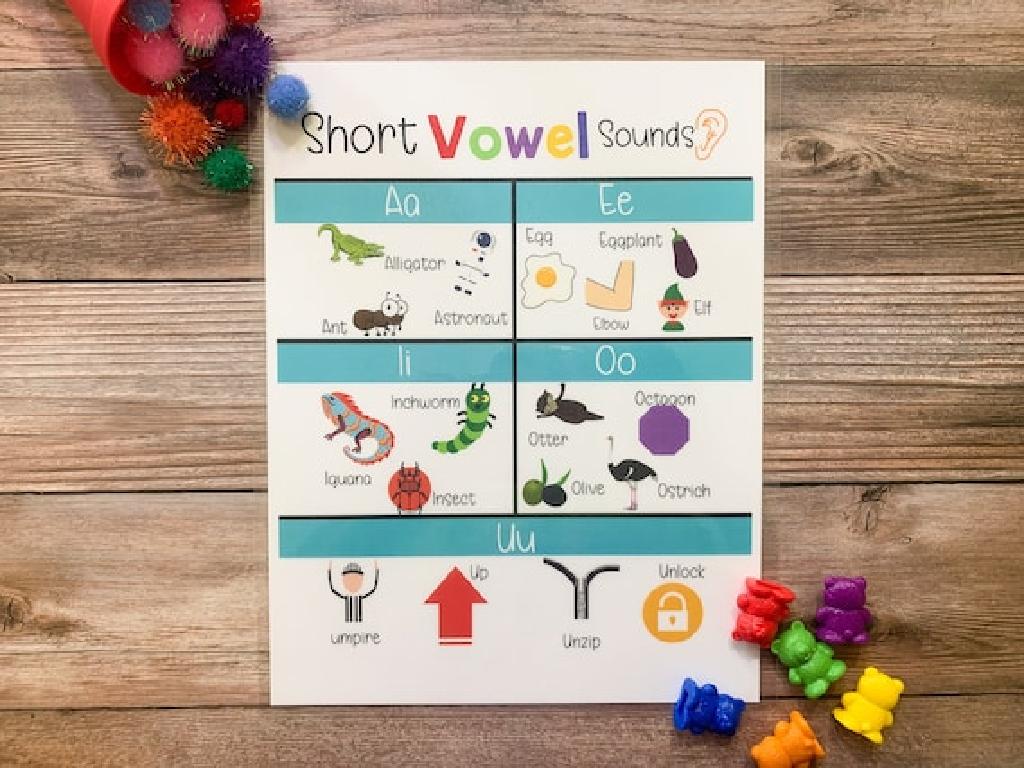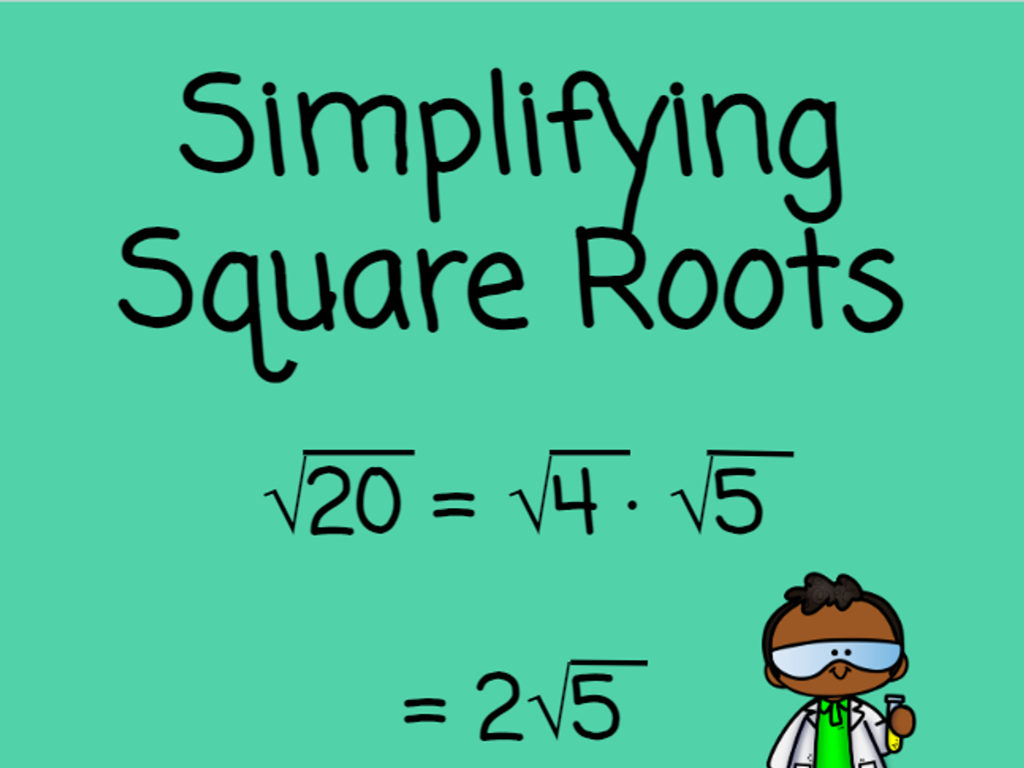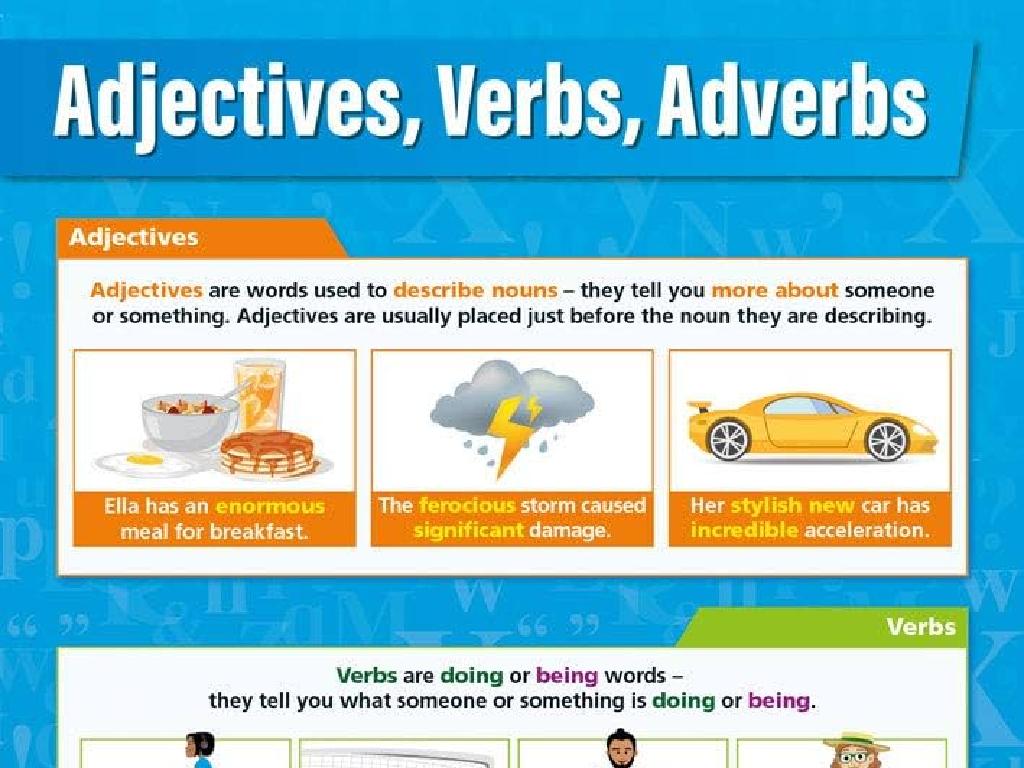Read Fantasy With Illustrations
Subject: Language arts
Grade: Third grade
Topic: Literary Texts: Level 1
Please LOG IN to download the presentation. Access is available to registered users only.
View More Content
Welcome to the World of Fantasy!
– What is Fantasy?
– A genre with magical & unreal elements
– Magic in Fantasy
– Wizards, dragons, and spells oh my!
– Supernatural Elements
– Ghosts, unicorns, and other mystical beings
– Exploring Stories & Illustrations
– We’ll read and view fantasy tales together
|
This slide introduces students to the fantasy genre, a cornerstone of children’s literature that sparks imagination and creativity. Fantasy is defined by its magical and supernatural elements, which are not found in the real world. Encourage students to think about their favorite fantasy stories and what makes them special. Highlight the importance of illustrations in bringing these stories to life, as they provide visual cues and enhance the magical experience. As you explore fantasy stories in class, ask students to pay close attention to how illustrations complement the text and help to build the fantastical world. This will set the stage for further activities where students can create their own fantasy stories and illustrations.
Exploring Fantasy: Magic and Mythical Worlds
– Discover the magic in stories
– Magic can be spells, flying, or talking animals
– Meet mythical creatures in books
– Creatures like unicorns, dragons, and fairies
– Imagine different fantasy worlds
– Worlds where anything is possible, like floating islands
– Examples from children’s literature
– ‘Harry Potter’ for magic, ‘Narnia’ for creatures and worlds
|
This slide introduces students to the enchanting elements of fantasy literature. Discuss the concept of magic and how it can manifest in various forms such as spells, enchanted objects, or magical abilities. Introduce mythical creatures, highlighting their unique features and roles in stories. Explore the concept of imaginary worlds, emphasizing their limitless possibilities and differences from the real world. Use well-known children’s books as examples to illustrate these elements, such as the magic in ‘Harry Potter’, the creatures in ‘The Chronicles of Narnia’, and the whimsical worlds in ‘Alice in Wonderland’. Encourage students to think of their favorite stories and share what magical elements, creatures, or worlds they love.
The Magic of Illustrations in Fantasy Stories
– Illustrations animate stories
– Pictures add excitement and detail to the tale
– Visual cues aid comprehension
– Images help us grasp characters and settings
– They enrich the author’s world
– Artwork shows us the fantasy world beyond words
– Encourage imagination in readers
|
This slide emphasizes the importance of illustrations in fantasy literature, especially for third-grade students. Illustrations do more than just decorate the page; they provide a visual representation of the story, making it more engaging and easier to understand. They serve as visual cues that can help students to better grasp complex elements of the story such as the setting, characters, and mood. By seeing the author’s world through the eyes of the illustrator, students can also expand their own imaginations and creativity. Encourage students to pay close attention to the illustrations as they read, and think about how they complement the text. Discuss how different images make them feel and what they can learn about the story from the artwork alone.
Reading with Imagination: Fantasy and Illustrations
– Fantasy reading fuels imagination
– Picture the magical worlds in your mind
– Illustrations guide our thoughts
– Artists’ drawings help us see the story
– Imagining beyond the pictures
– What else could be happening in the scene?
– Create your own fantasy world
– Draw or describe a place you dream up
|
This slide aims to inspire students to engage with fantasy literature by using their imagination to visualize the story beyond what is presented in illustrations. Encourage them to think creatively and form their own interpretations of the text. Illustrations serve as a starting point, but each reader’s imagination can expand on that foundation to create a unique and personal experience. Activities can include drawing their interpretation of a scene or writing a short paragraph about a new element in the story’s world. Emphasize the joy of reading and the freedom it gives to explore limitless possibilities.
Creating Your Fantasy Creature
– Imagine a magical creature
– Give it special powers
– Can it fly or become invisible?
– Draw your creature
– Share with the class
– Tell us why it’s special
|
This slide is designed to spark the creativity of third-grade students by having them engage in a fun and imaginative activity. Students are encouraged to think outside the box and create their own unique fantasy creature, considering what special abilities it might have, such as flying, invisibility, or time travel. They will then draw their creature, adding visual elements that reflect its powers and characteristics. Finally, students will have the opportunity to present their creature to the class, explaining the inspiration behind it and the powers they’ve chosen. This activity not only fosters creativity but also helps develop presentation skills and boosts confidence. Teachers should provide drawing materials and encourage a supportive environment where every student’s creation is celebrated.
Class Activity: Fantasy Gallery Walk
– Display fantasy creature drawings
– Walk around the ‘Fantasy Gallery’
– Discuss classmates’ illustrations
– Share what you like about the drawings and the possible stories
– Imagine stories behind the drawings
– Think about what adventures these creatures might have
|
This activity is designed to foster creativity and discussion among students. Each student will display their drawing of a fantasy creature around the room, creating a ‘Fantasy Gallery’. As they walk around, encourage them to observe each illustration closely and think about the unique characteristics of the creatures. Students should discuss what they admire about their classmates’ artwork and speculate on the stories each creature might tell. This will help them practice expressing their thoughts and expand their imagination. For the teacher: Prepare to guide the discussion, provide positive feedback, and ensure each student gets a chance to share. Possible activities include guessing games about the creatures’ powers, creating a group story, or voting for the most creative creature.
The Magic of Fantasy: Conclusion
– Fantasy opens new worlds
– Imagination unlocks magic
– Think of ‘imagination’ as a magic key in stories
– Keep reading, keep imagining
– The more you read, the higher you’ll fly in your mind’s sky
– Your adventures are limitless
|
As we wrap up our journey through fantasy literature, emphasize to the students how fantasy stories paired with illustrations can transport them to incredible new worlds. Encourage them to use their imagination as a tool to delve deeper into the stories they read. Remind them that their imagination is like a key that unlocks the magic within these tales, allowing them to experience the adventures as if they were part of them. Motivate the students to continue reading and to let their imaginations guide them to limitless adventures. Reinforce the idea that through reading, their imagination can take them anywhere they want to go, and there are always more stories to explore.






